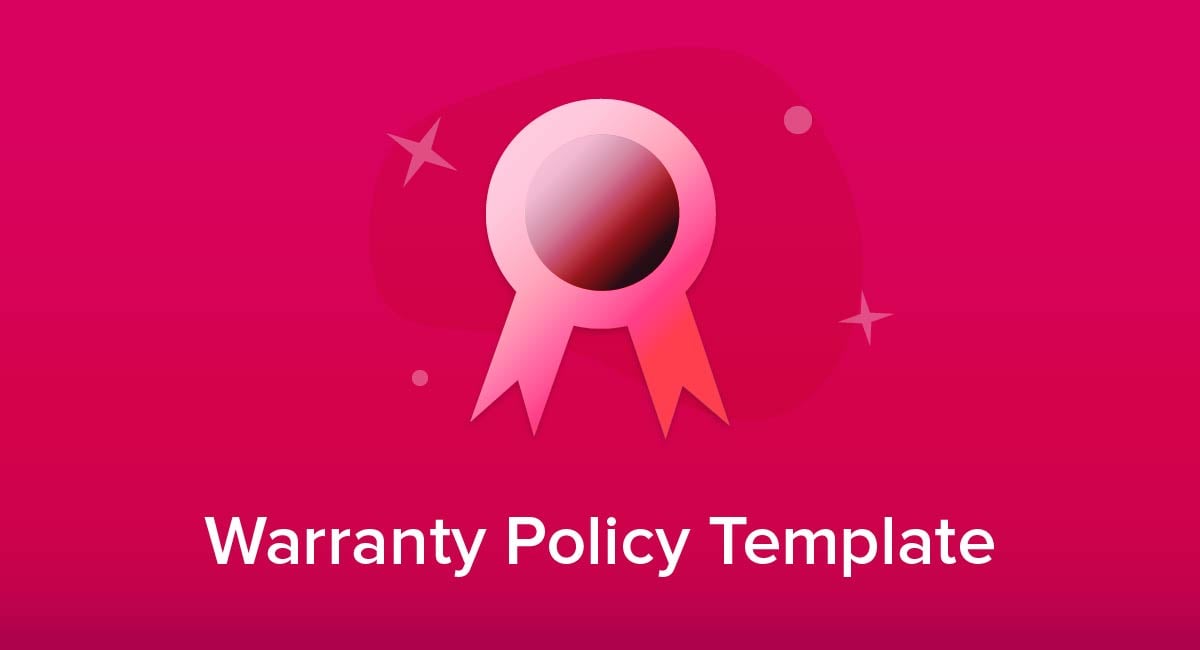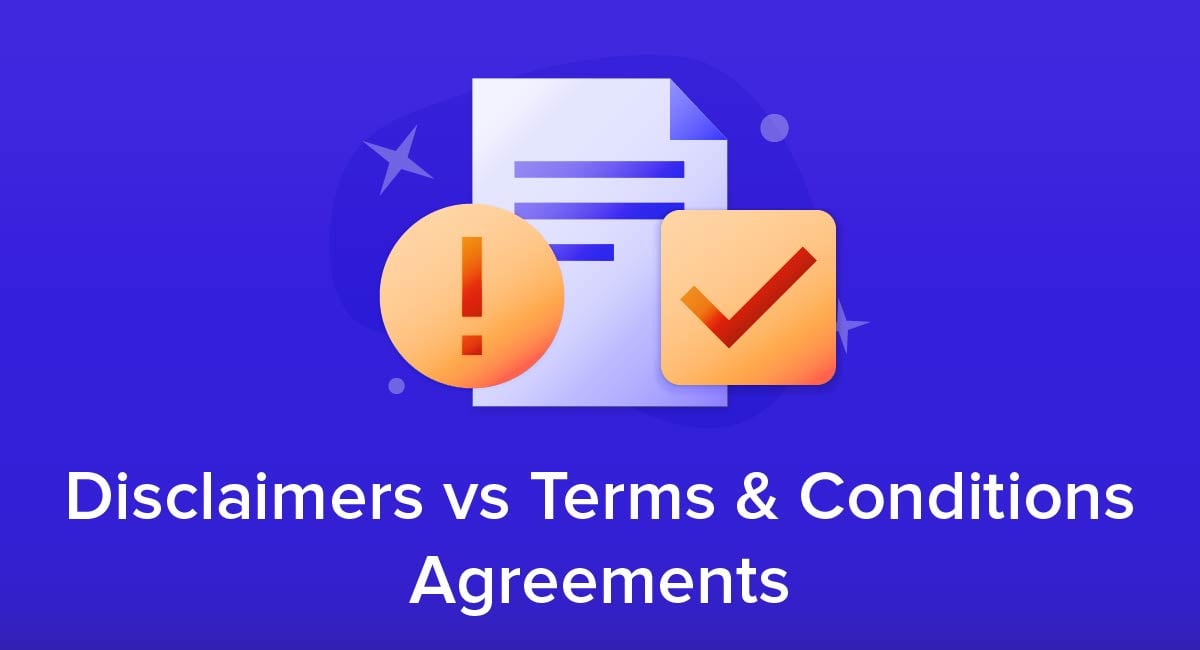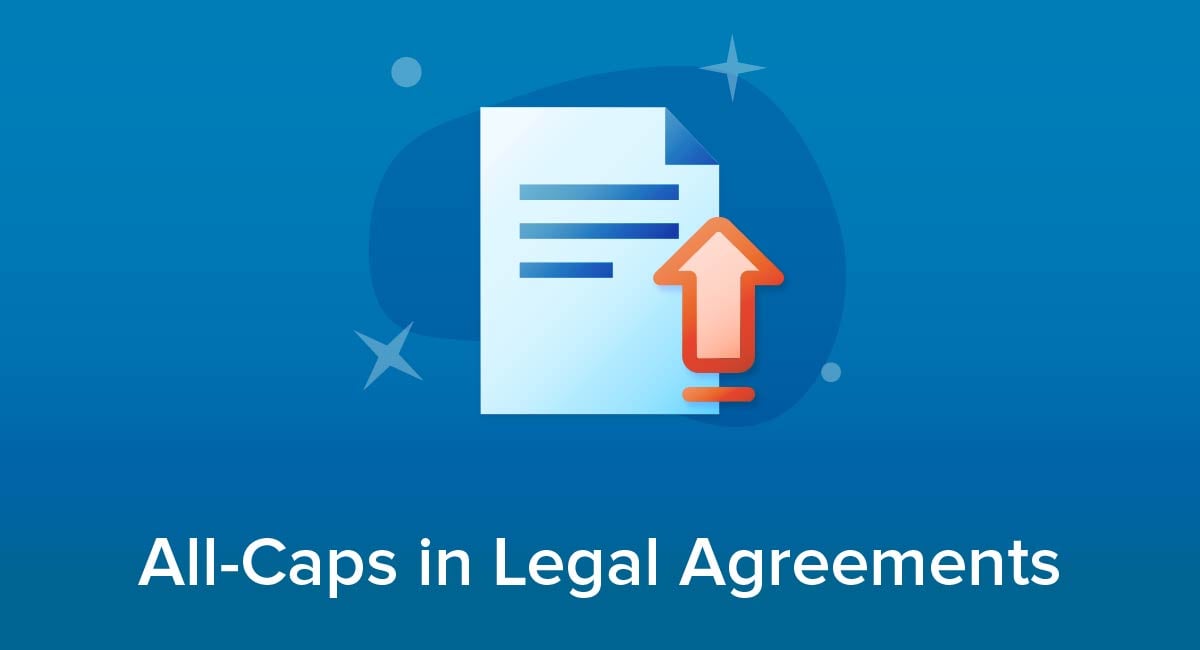
When you write a legal agreement, you may either want or need to emphasize particular points or sections. Using All-Caps is a common way to do this and can feel like a safe option. However, it does have some drawbacks, and other forms of emphasis can sometimes be more effective.
This article will look at how, when and why to use all-caps in legal agreements.
Use FreePrivacyPolicy.com to generate the necessary legal agreements for your website/app:
- Free Privacy Policy Generator
- Free Terms and Conditions Generator
- Free Cookies Policy Generator
- Free Disclaimer Generator
- Free EULA Generator
- Free Return & Refund Policy Generator
You check our Free Cookie Consent to start making your business legally compliant with the Cookies Directive in the EU.
- 1. Why Do People Use All-Caps in Legal Agreements?
- 2. Is All-Caps Required in Legal Agreements?
- 3. What are Some Drawbacks of Using All-Caps?
- 4. Examples of All-Caps in Legal Agreements
- 4.1. Terms and Conditions Agreements
- 4.2. End User License Agreements
- 4.3. Privacy Policies
- 4.4. Other Contract Terms
- 5. Alternative Ways to Emphasize Text
- 6. Summary
Why Do People Use All-Caps in Legal Agreements?
Somebody using All-Caps in Legal Agreements usually does so to satisfy a legal requirement to make a particular piece of text conspicuous.
The most common reason is to follow the Uniform Commercial Code (UCC). This is a set of rules introduced in the 1950s that most US states have adopted to govern commercial relationships and contracts. The UCC has several clauses that state specific contract terms must be "conspicuous" to be enforceable. The most notable of these is warranty exclusions.
In the 1950s, when legal documents were usually produced on typewriters rather than computers, All-Caps was one of the easiest and most common ways to emphasize text. Many legal documents used today still use this approach. This can be because people reuse sections of existing legal documents, or because they believe the approach is required to be legally valid.
Is All-Caps Required in Legal Agreements?
Using All-Caps is not required to make a legal agreement valid or to comply with the UCC or other laws.
The UCC simply defines "conspicuous" as "so written, displayed or presented that a reasonable person against which it is to operate ought to have noticed it." It notes that it's up to the court ruling in a specific case to decide what counts as conspicuous.
The UCC does also give two examples of presentation that would count as conspicuous:
- "A heading in capitals equal to or greater in size than the surrounding text, or in contrasting type, font, or color to the surrounding text of the same or lesser size."
- "Language in the body of a record or display in larger type than the surrounding text, or in contrasting type, font, or color to the surrounding text of the same size, or set off from surrounding text of the same size by symbols or other marks that call attention to the language."
It's notable that although the UCC does suggest All-Caps as one of several suitable approaches for headings, it does not mention it as a suitable approach for the body of text.
Several other laws governing legal documents require terms to be conspicuous. For example, many privacy laws say terms in Privacy Policies must be stated clearly and conspicuously. However, such laws rarely, if ever, suggest or require All-Caps for this purpose.
Occasionally a law may require that a legal agreement include a specified wording, with the law listing part or all of this wording in All-Caps. Lawyers are divided on whether this means that the wording must appear in All-Caps in legal agreements, or if using the same wording but in sentence (ordinary) case would be sufficient.
What are Some Drawbacks of Using All-Caps?
The main drawback to All-Caps is that it affects readability. This is because most people do not read by looking at each letter individually, but instead by first trying to recognize a word using its shape and the context of the sentence.
The shape of a word is considerably more distinctive in lower case as the height, width and relative position varies significantly between different letters. With capital letters these variations are smaller and harder to spot at first glance. This means reading extensive passages of all capital letters is slower and more mentally draining.
Using All-Caps, like any form of emphasis, can be less effective when used for full paragraphs, sections or the entire document.
Examples of All-Caps in Legal Agreements
Let's explore some of the legal agreements where you may need to emphasize text in a legal agreement and then examine examples of how real documents used All-Caps and other methods to do this.
Terms and Conditions Agreements
A Terms and Conditions agreement will typically have All-Caps sections in at least two specific places: its warranty disclaimer and a limitation of liability.
A warranty disclaimer is a statement that says you are not making a particular promise (or any promise at all) about your product or service. Alternatively, it could detail any restrictions or limitations to the warranty you are making.
A limitation of liability is a statement that says you are not responsible (or only partially responsible) for harm suffered by the customer when using your product or service. This clause could limit the reasons for which you can be held responsible, or your financial responsibility to a specific figure, or list a formula for calculating your maximum liability, for example limiting it to the amount the customer paid for the product or service.
Without a warranty disclaimer, a customer could argue they reasonably assumed a warranty applied.
As we noted, the Uniform Commercial Code specifically requires that any exclusion to a warranty be emphasized to make it "conspicuous."
Here's how THK puts an entire warranty disclaimer in All-Caps:
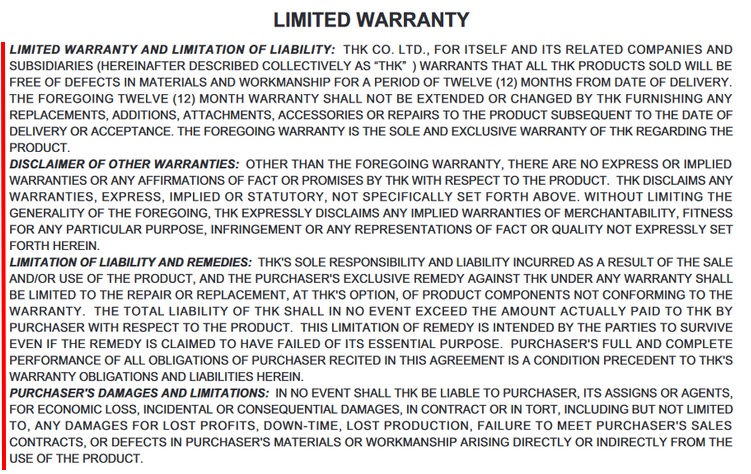
Google uses All-Caps only for the warranty exclusion text, but not the rest of the clause:
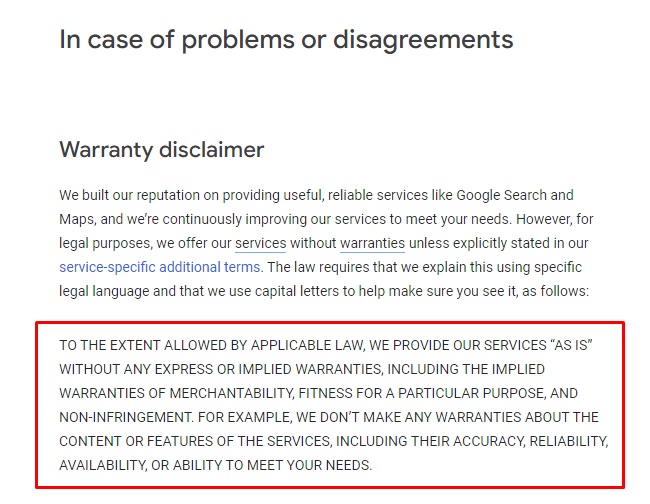
Apple puts part of its limitation of liability in All-Caps but not other parts. This is likely because it wants to make this specific part conspicuous:
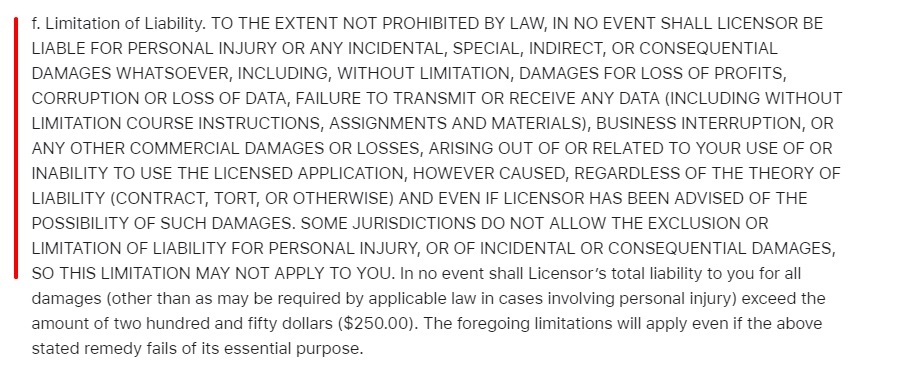
End User License Agreements
An End User License Agreement (EULA) sets out the legal relationship between a software developer and the customer, regardless of who sold the software. It details the ways the customer can and can't use the software and the developer's responsibilities.
A EULA will often be a lengthy document so you may want to emphasize particular points. These can include any key rights or responsibilities, or elements of the EULA that a customer might not expect to see if they are more familiar with ordinary user agreements or sales contracts.
UBISOFT uses All-Caps to emphasize the importance of the document as a whole, plus a fundamental aspect of the agreement:
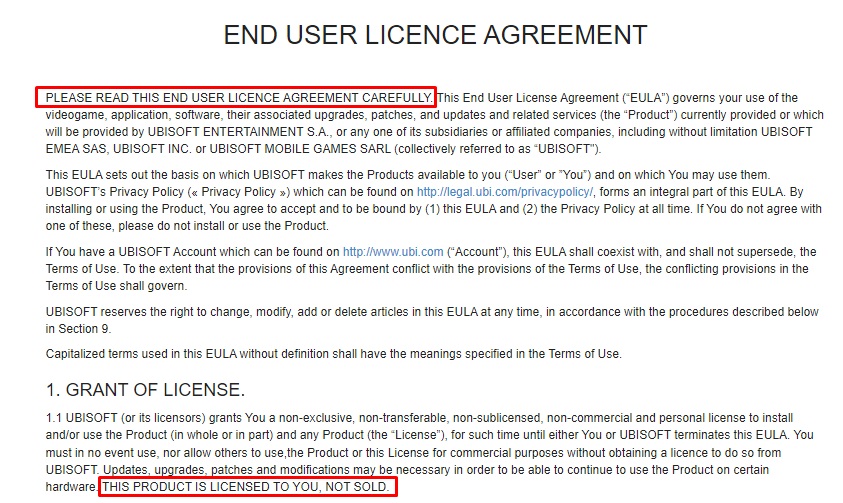
Privacy Policies
Many privacy laws specifically require businesses to publish a Privacy Policy. But no laws say specific text must be emphasized in All-Caps in a Privacy Policy. Instead, laws require that the information as a whole must be clearly conveyed.
For example, the GDPR says the information should be in a "concise, transparent, intelligible and easily accessible form, using clear and plain language."
A well-written Privacy Policy will include all the required information in a logical, organized format, without unnecessary text. This means you won't usually need to emphasize a particular part of the policy, for example with All-Caps. Instead, All-Caps can work better as part of your overall organization and layout.
Elastic uses All-Caps for several different purposes in a Privacy Policy document. These include to highlight the name of the document, to introduce a new section, and to highlight a legal point:
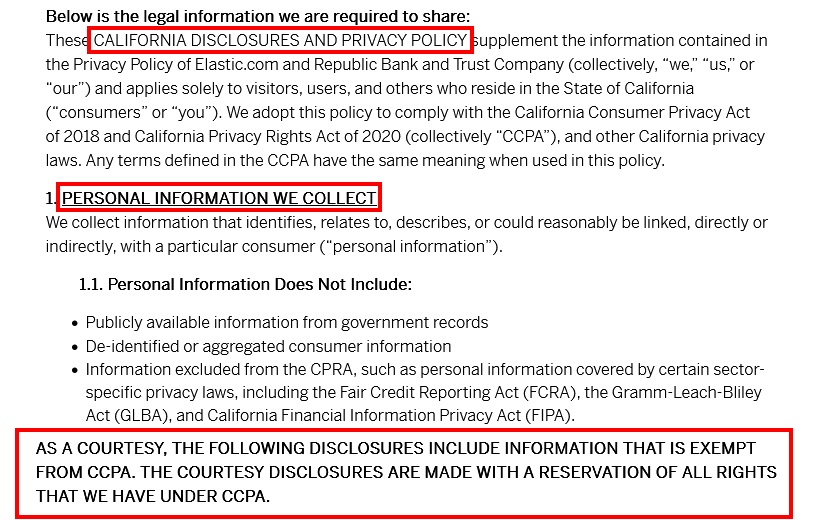
Other Contract Terms
You may want to emphasize any particularly important contract terms, especially if your contract is lengthy. This is particularly worth doing if the contract term changes a default position or involves an unusual situation.
Cloud Software Group uses All-Caps to highlight a key contract term. This term covers something that will happen by default unless the customer takes action. The company may need to show it made this point conspicuously so that the customer was definitely aware of their need to act:

Alternative Ways to Emphasize Text
As we've noted, using All-Caps can make it harder to read text, particularly across a long block of text. For this reason, legal agreements (particularly ones written from scratch rather than adapted from older documents) often use other methods to emphasize text.
These include:
- Bold
- Italics
- Underlining
- Putting a box around the text
- Putting the text in a different typeface
- Putting the text in a larger typeface
Which of these works best may depend on the length of the text you want to emphasize and the format of the rest of the document. Try to be consistent in the way you emphasize key text.
OpenAI uses a range of methods to emphasize text. It uses All-Caps to conspicuously emphasize that arbitration is mandatory under the agreement. It then uses bold to show the topic of individual clauses. It uses quotation marks when first defining a word with a specific meaning in the legal agreement. It then capitalizes the word whenever it uses it, reminding readers that it has a specific definition:
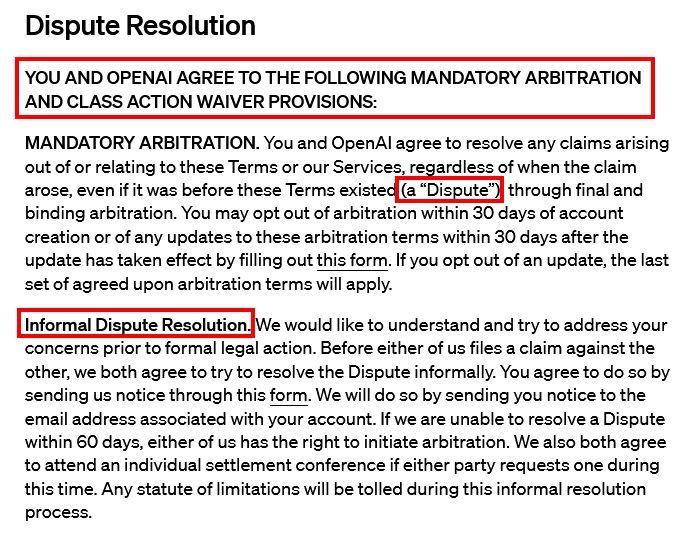
Summary
Text written in All-Caps can draw attention to particular parts of a legal agreement. This is helpful to make sure important clauses and terms aren't missed, such as a clause that limits your liability or disclaims any and all warranties.
Consider using All-Caps in your legal agreements such as your EULA, Privacy Policy and Terms agreement.
As using All-Caps can make reading more difficult, other options such as bold or larger type size may be better options for making text conspicuous. However, All-Caps is still consistently used and fully acceptable.
